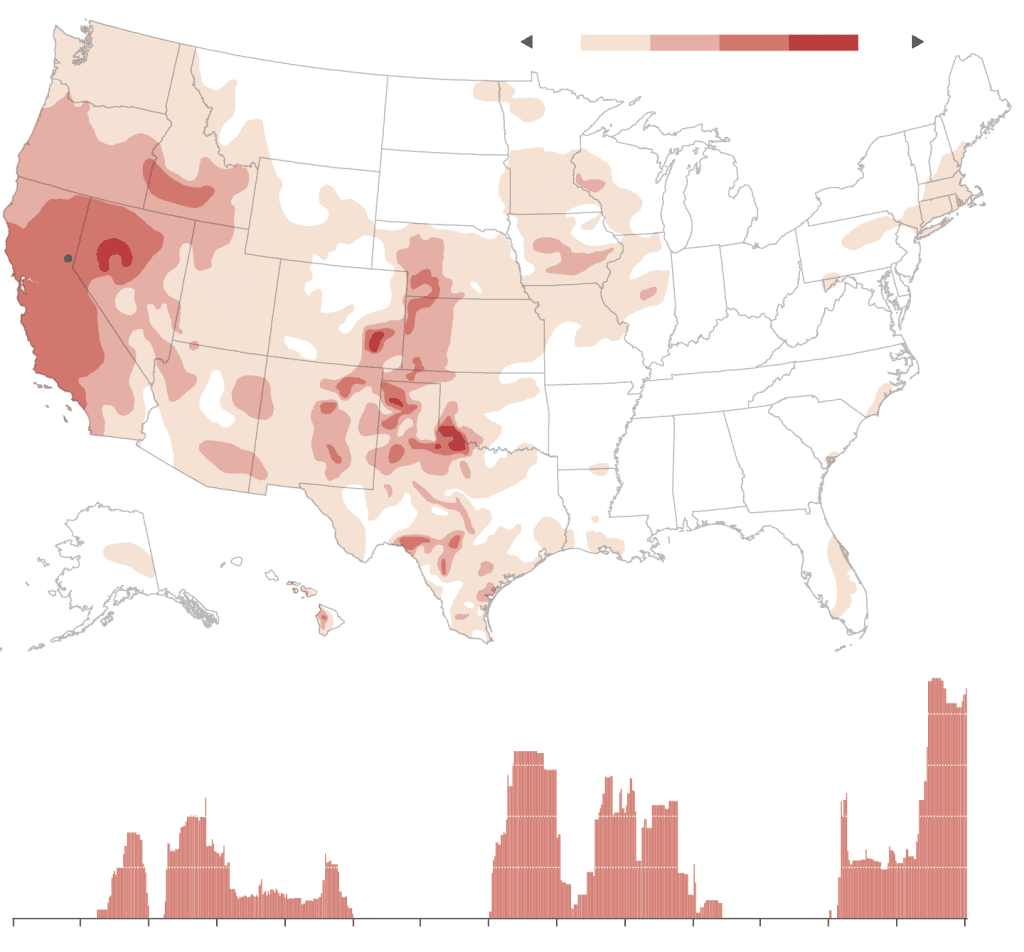The National Oceanic and Atmospheric Administration (NOAA) said in a statement that California just came off its warmest winter on record. On average there were 48 Fahrenheit (9 Celsius) for December, January and February, making it 4 degrees hotter than the 20th-century average in California. The state is currently facing its most dire drought streak in years, and this latest news is most concerning. Of course, for the farmers in California this doesn’t come as a novelty, yet with their best efforts, it’s still very difficult for them.
For California, a warm winter is a whole not worse than a scorching summer. California, and other similar states in the US, rely on winter weather for their annual water budget as the snow that accumulates in the Sierra Nevada Mountains melts throughout spring and summer and feed neighboring rivers. “If you’re starting from a deficit and going into the dry season, it’s setting you up for a drier summer,” said NOAA spokesman Brady Phillips said.
The Department of Water Resources said that the snowpack was only 20 percent of the historical average. The lack of precipitation has been caused in large part by a high-pressure zone stretching along the coast from Oregon to northern Mexico. The zone acts like a mountain range, blocking storm systems from striking land. Storms are pushed instead north into Canada and Alaska, contributing to the extreme cold weather seen in recent weeks across much of the Midwest and Northeast. Though such high-pressure zones are normal during the winter, they usually dissipate and re-form, allowing storms to blanket the state in snow and rain.
California is in the grip of a three-year dry spell that threatens to have devastating effects on the state and beyond. Farmers are considering idling a half million acres of cropland, a loss of production that could cause billions of dollars in economic damage, and several small communities are at risk of running out of drinking water.
Californians are in their third consecutive drought, and this year’s seems the worse in decades bearing potentially devastating effects on the state and beyond. More than a half million acres of cropland may be discarded from use this year, translating in billions of dollars worth of damage. In the Bay Area, some 17 communities risk running out of water altogether in the forthcoming 100 days. Governor Jerry Brown has called for Californians to reduce water use by 20 percent voluntarily, and mandatory rationing could be ordered soon so that homes, businesses and farms don’t run dry over the summer.
Around the West and in the Great Plains, multiple states also experienced warmer temperatures and low rainfall. Arizona had its fourth warmest winter to date and Texas had it lowest reservoir levels in 25 years by March. Overall, rainfall across the entire United States was far below normal this winter with only 5.7 inches of rain falling in the past three months, causing the ninth driest winter on record.
The California Department of Food and Agriculture and the U.S. Department of Agriculture will be holding an informational session on drought resources for farmers, ranchers and farmworkers in Cloverdale. This session will provide information on a variety of state and federal government programs designed to assist farmers with water conservation, crop insurance, and other on-farm management tools. Information on farmworker assistance programs will also be available.










